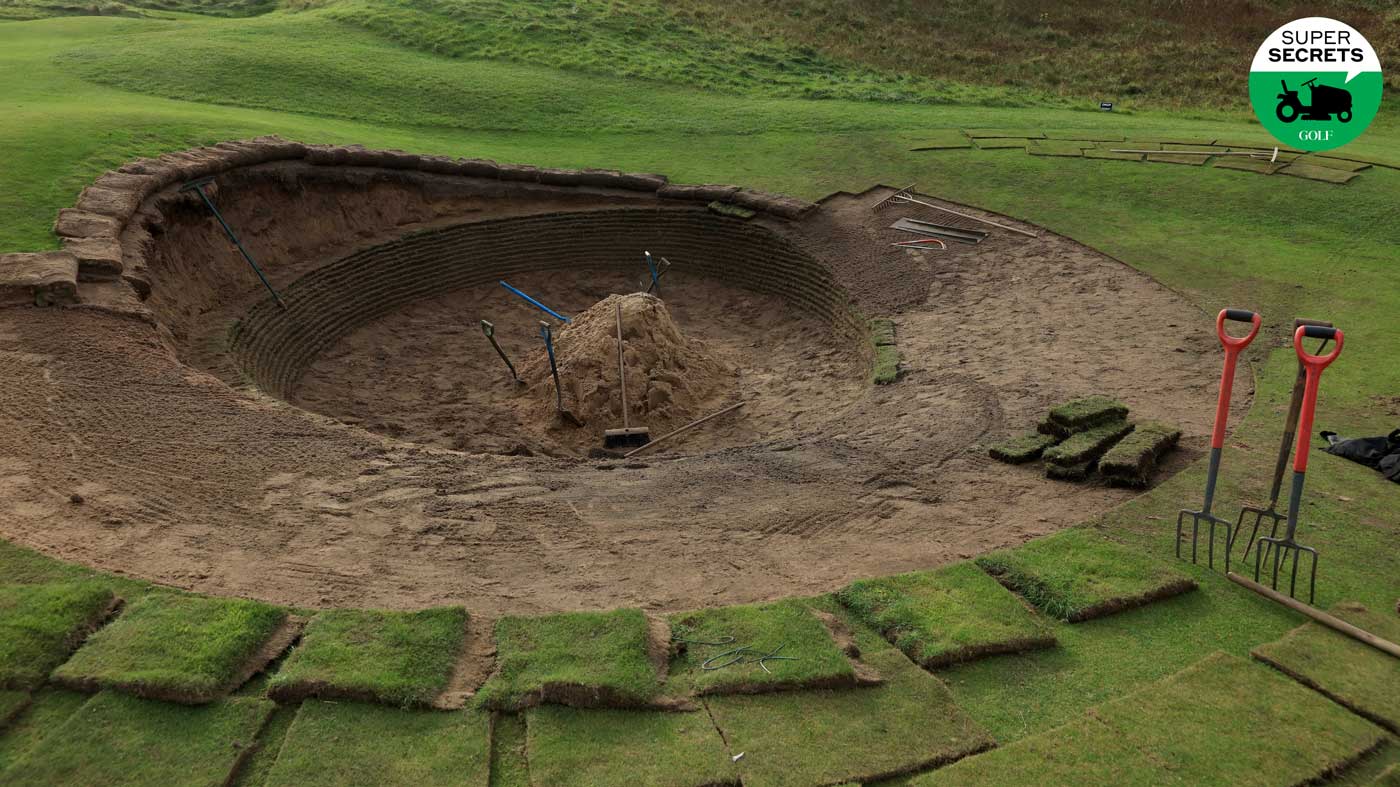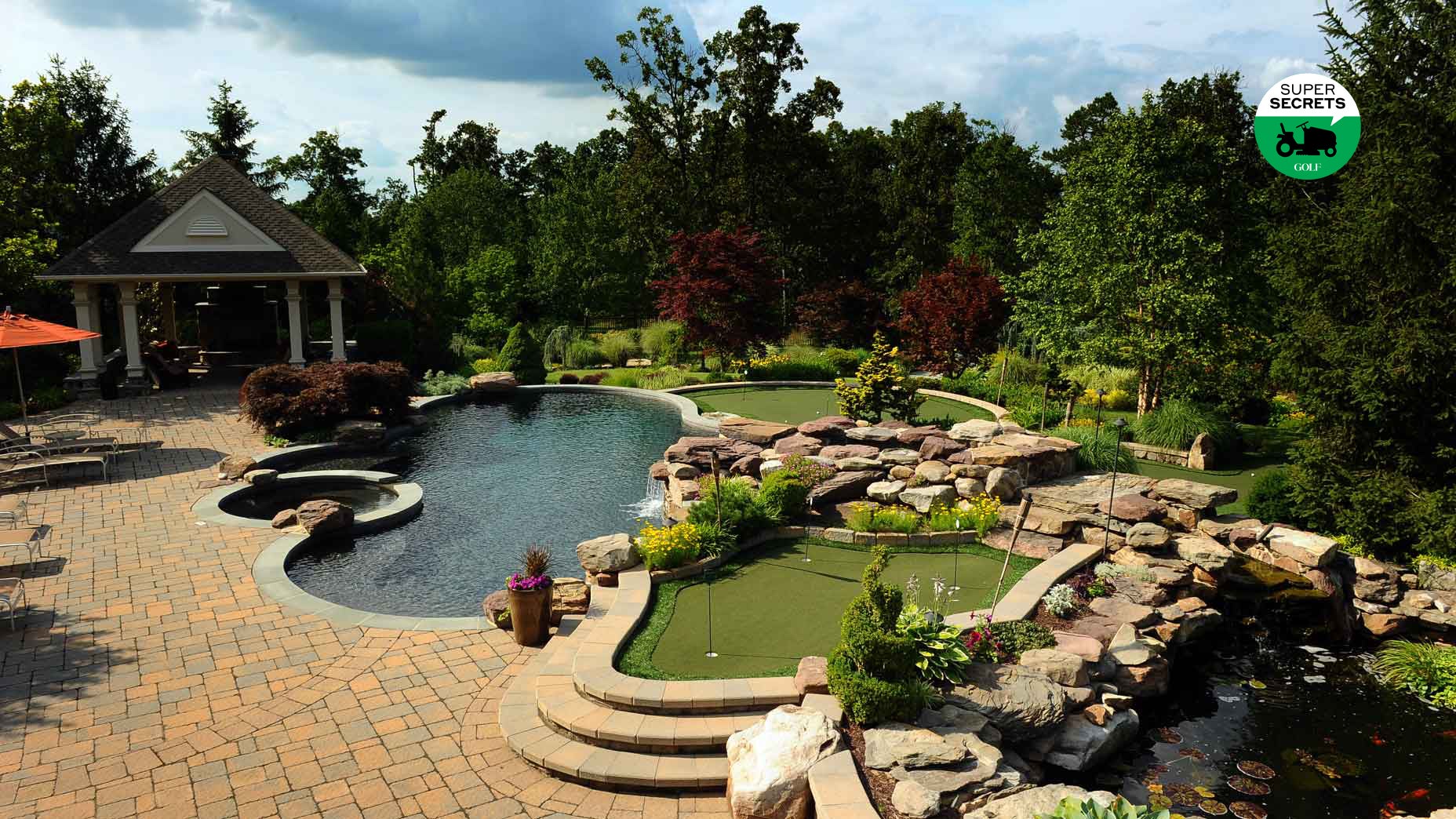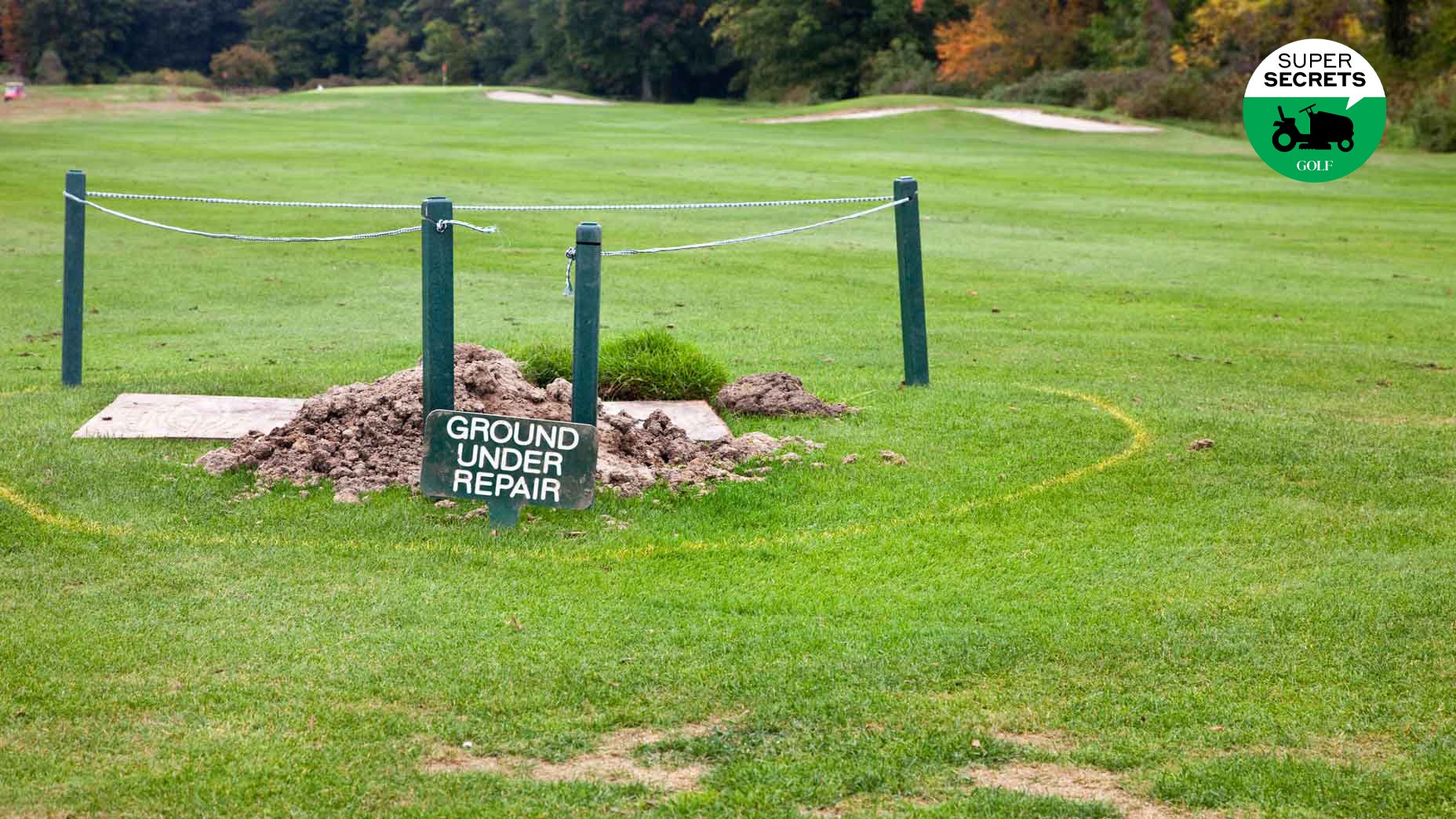The sneaky reason the bunkers at this Open Championship will give players fits

Part of the secret to the difficulty of Royal Liverpool's bunkers lies beneath.
getty images
Ask the players at the Open Championship this week about the key to scoring at Royal Liverpool and you’ll hear a familiar refrain.
“Links golf is all about avoiding bunkers and positioning yourself in the right spot,” Brooks Koepka said.
Added Collin Morikawa, who won the claret jug in 2021: “Obviously they’ve always talked about staying out of the bunkers, but it’s really true. It’s a shot penalty if you hit it in these fairway bunkers. So that’s step number one this week.”
Scottie Scheffler, any thoughts?
“If you just avoid the bunkers, you can do whatever you want,” said the world No. 1.
Sounds simple, right? But it’s not, of course. That’s because there are 81 sand pits around the windswept course, or an average of 4.5 per hole. They pinch driving zones, encircle greens like croc-filled moats and generally serve to intimidate.
“Anytime my ball is going towards a bunker, I’m very nervous,” Scheffler continued. “I’m just going to try and avoid the bunkers at all costs.”
Rarely do you hear players speak of bunkers at stateside courses in such fearful terms — heck, in many cases, pros would rather their balls find the sand than the rough. That’s a reflection not only of the juiciness of the long stuff at most PGA Tour venues but also of the relative benignness of the sand. Bunkers are so perfectly manicured in the U.S. that players expect to get up and down.
At the Open Championship — and especially at Royal Liverpool — that calculus is flipped, and not just because of the cavernous nature of pot bunkers. The real secret to the difficulty of the Hoylake bunkers lies in how they’re raked — and also in what lurks beneath.
James Bledge, the links manager (aka chief superintendent) at Royal Liverpool, explained as much in a video on golf presenter Iona Stephens’ YouTube channel, On the Road with Iona. As Bledge gives Stephens a walking tour of the course, they pause at a newly installed fairway bunker on the left side of the 1st fairway.

“If you chuck a ball in there, it will always end up in the middle, which we rake with a springbok rake,” Bledge says, referencing the style of rake traditionally used for clearing up leaves.
That’s intentional — the club wants its members to have a chance of getting their balls back to safety. But when the best players in the world come to town, that thinking changes.
“At the Open, we’ll rake it with a hay rake, all the way around and flat,” Bledge says.
That adjustment hasn’t gone unnoticed by players. “These bunkers have really wide teeth rakes…” Michael Kim tweeted Monday. “Might be tough to see with this video but the ball really rolls down to the crevice. It’s not plugged but def not a good lie ESPECIALLY if you’re in a fairway bunker. Auto 60 degree pitch out. They might change rakes but it’s something to note.”
But raking patterns aren’t the only way Bledge and his team have made Royal Liverpool’s bunkers more penal.
“We’ll be digging the bowl down to keep it flat so balls run right against the lip,” Bledge says in the video. “In the next few days, we’ll dig down. There are four or five revets hidden under there, and we’ll pull it back so the middle of the bunker will come up a little bit but the edge will be down and you’ll get balls trapped right in.”
In other words, the bunker bases are pitched in such a way that balls will collect not in the middle but up against the walls.
Ergo, Scheffler’s anxiousness.
“I feel like at St. George’s a lot of the bunkers had a tiny bit of an upslope before you got to the wall face,” Scheffler said of the 2021 Open venue, “and here it seems like the faces of every bunker is almost a downslope going towards it.
“I don’t think that’s something I particularly like in a golf course. I think it doesn’t reward the good shots as much. If you’re closer to the green, you end up closer to the lip, and if you get a worse shot and barely get into the bunker you actually have a play. So I would prefer if there was a little bit of slope there.
“But that’s what’s so special about the majors. Every golf course is different and it’s a challenge, and I’m just going to do my best to stay out of them this week.”
He won’t be alone.










